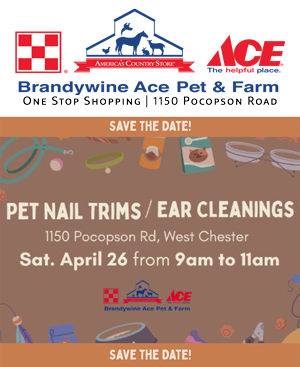Xylitol-sweetened products could help fight tooth decay and satisfy a sweet tooth
By Dr. Stephanie McGann, DMD, FAGD, Columnist, The Times
 Halloween is coming, and to be fair my kids are no different than yours. They will go out on Halloween and they will try to visit even more homes in the neighborhood than last year. A very large and heavy sack of candy will be spilled out on the table when they arrive home.
Halloween is coming, and to be fair my kids are no different than yours. They will go out on Halloween and they will try to visit even more homes in the neighborhood than last year. A very large and heavy sack of candy will be spilled out on the table when they arrive home.
For the record, I am not “that dentist;” I don’t give out toothbrushes and sugar-free gum at my doorstep. While I may professionally think this is a great idea, my kids and their friends do not. So much like any other family in our neighborhood, there is candy available to the local ghouls and goblins.
So to offset my guilt of the season, let’s talk sugar.
Ok, not just any sugar, but a natural sugar that can made from the bark of the birch tree, corncobs, raspberries, beets and some mushrooms. Xylitol, it’s sweet like sugar, has no artificial chemical taste like so many artificial sweeteners and contains 40% fewer calories than regular cane sugar. Xylitol has one other tremendous claim to fame; it has been shown to reduce tooth decay.
Here’s where it gets very interesting. While so many artificial sweeteners can boast they don’t cause tooth decay, xylitol actually reduces it. We know that when we eat sugary foods the bacteria that live in our mouths metabolize this sugar and produce acids that erode the teeth. When we eat artificial sweeteners the there is no sugar so no acid is produced. When we consume items sweetened with xylitol, the bacteria ingest the xylitol, they do not produce the acids that damage teeth and they are unable to produce acids in the future because the streptococcus mutans (the bacteria responsible for most tooth decay) just can’t metabolize xylitol.
So the basic idea here is, foods, candies, gums or beverages sweetened with zylitol taste sweet, have fewer calories, do not cause cavities and may even reduce potential cavities caused by other sugars. Sounds too good to be true. Xylitol is the real deal and more and more candies and gums are being sweetened with it. Europeans have been using it by the pound for baking and as a cane-sugar substitute. Check the labels, some gums you see at the check- out may actually be sweetened with xylitol. Check the ingredients listing for xylitol.
My favorite is Xyla candies. I found them at our local Giant supermarket. They come in tins much like Altoids, and are available in a number of flavors. While some sugarless gums like Trident contain xylitol, they contain so little of it that it’s not really very helpful in reducing tooth decay.
Is it safe? A number of agencies including the U.S. Food and Drug administration have evaluated Xylitol and confirmed the product’s safety. The only concern noted in the literature is the some dogs are unable to digest xylitol and pet owners should be aware and keep xylitol containing products away from their dogs.
Does it really improve oral health? In order for xylitol to have a significant impact on dental disease, cavity prone individuals should use xylitol gum or mints 3 to 5 times over the course of a day. This is ideal for individuals who suffer from dry mouth and often suck on mints to keep their mouth moist. Cavity prone kids can chew xylitol gum after each meal or snack and see a noticeable improvement at their next check up.
The trick for Halloween is brush after sugary snacks and keeps xylitol gum or candies available for everyone.
Dr. Stephanie McGann is a resident of the Unionville area and along with her partner, Dr. Marie Scott, operates The Brandywine Smile Center, a family-friendly dental practice in Concordville. She is a Fellow of the Academy of General Dentistry. The Brandywine Smile Center is pleased to be sponsoring the 4th annual Trick or Treat for Troops. Learn more at http://brandywinesmilecenter.com/trick-or-treat-for-troops








Nice Article,
Really Informative.
Thanks.